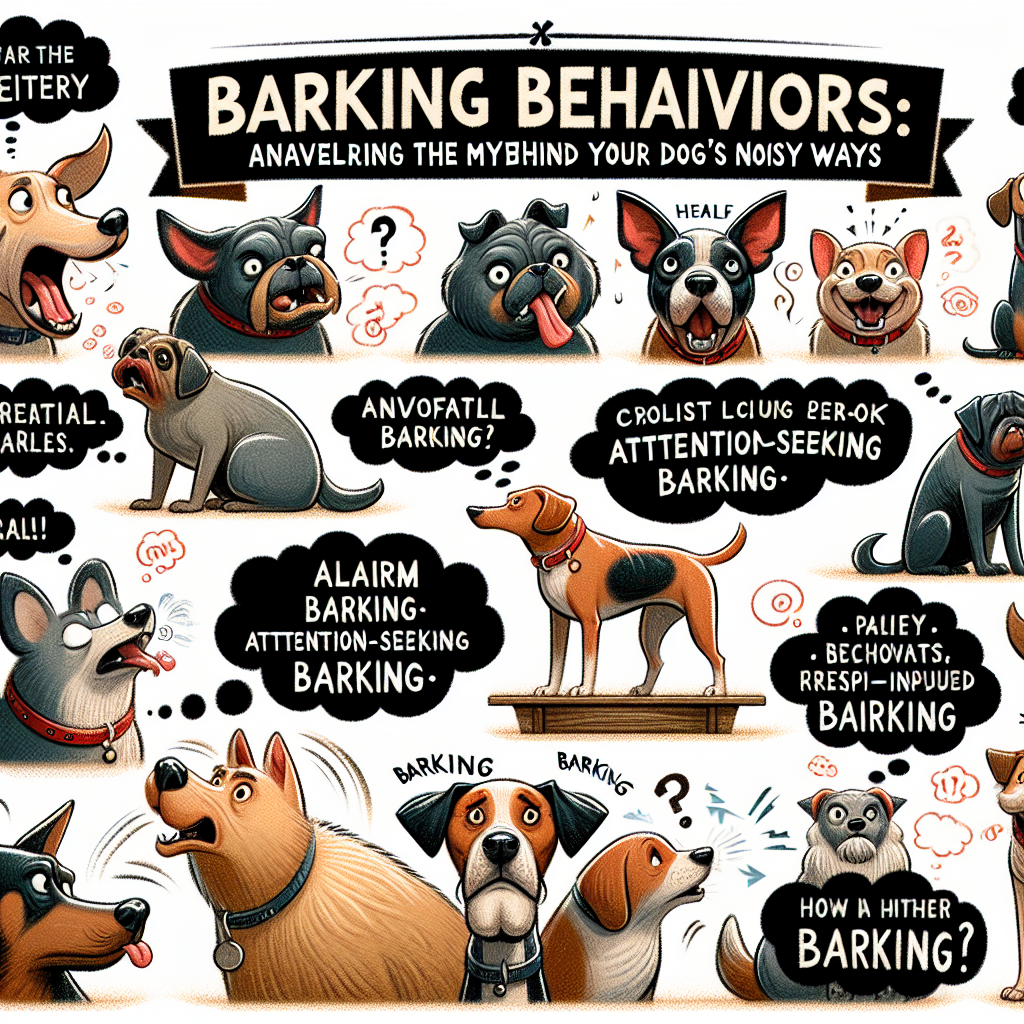
As a seasoned dog trainer, I’ve had the privilege of working with countless furry friends, and I’ve noticed a common theme: barking. It’s a noise that can be frustrating, disturbing, and even startling, but it’s also a cry for help. In this article, we’ll delve into the world of barking behaviors, exploring the reasons behind this common canine behavior and, more importantly, what you can do to address it.
Understanding the Why Behind Your Dog’s Barks
Dogs bark for a variety of reasons, including:
- Anxiety and stress: Many dogs bark when they’re feeling nervous or stressed, perhaps due to loud noises, changes in their environment, or separation anxiety.
- Excitement and playfulness: Some dogs bark when they’re happy, eager to play, or anticipating a burst of energy.
- Alerting you to something: Dogs may bark to alert their owners to potential threats, such as strangers, other animals, or unusual noises.
- Boredom and attention-seeking: In some cases, dogs may bark due to lack of mental and physical stimulation, seeking attention from their owners.
Getting to the Bottom of the Barking Behavior
When addressing barking behaviors, it’s essential to consider your dog’s individual personality, environment, and needs. Here are some tips to help you get started:
- Identify the trigger: Take note of what triggers your dog’s barking. Is it a specific sound, person, or situation? Once you’ve identified the cause, you can work on addressing it.
- Provide adequate exercise and mental stimulation: Regular exercise and mental stimulation can help reduce boredom and stress, leading to fewer barks.
- Teach the "quiet" command: Train your dog to respond to a "quiet" command, which can help them learn to associate the behavior with the command.
- Redirect their attention: Redirect your dog’s attention to a toy or a different activity to help them focus away from whatever’s causing the barking.
- Use positive reinforcement: Reward desired behaviors, such as calmness or quietness, with treats and praise.
Common Barking Scenarios and Solutions
Here are some common barking scenarios and solutions:
- Separation anxiety: Provide a calming aid like a pheromone spray or a calming music CD, and consider crate training your dog during short periods.
- Playtime barking: Engage your dog in interactive play, such as hide-and-seek or scent games, to channel their energy.
- Noise phobias: Desensitize your dog to the noise by gradually exposing them to it in a controlled environment, rewarding calm behavior.
- Boredom barking: Increase mental stimulation with puzzle toys, scent work, or obedience training.
Frequently Asked Questions (FAQs)
- How do I know what’s causing my dog’s barking?
- Observe your dog’s behavior, body language, and reactions to different stimuli.
- How do I stop my dog from barking at strangers?
- Desensitize your dog to strangers by gradually introducing them in a controlled environment, rewarding calm behavior.
- Can I still let my dog bark at all?
- While some barking is normal, excessive barking can be a problem. Set boundaries and work on reducing the frequency and intensity of barking.
Unlock the Secrets to a Well-Behaved Dog!
Tired of your pup’s bad habits? Discover how to transform your unruly dog into a loving companion with our FREE Dog Training Mini Course! Learn essential commands, potty training tips, and effective techniques to eliminate unwanted behaviors in just days. Don’t miss out—sign up now and start your journey to a happier, obedient dog! (bit.ly/3RJak0a)
Instantly Access Your FREE Children’s Books Here!
Instantly Access Your FREE Children’s Books Here!
Disclaimer: As an Amazon Associate, I earn from qualifying purchases. I may earn a commission from qualifying purchases as an affiliate. Please note that I only recommend products I believe will provide value to my readers.
I hope this article has been informative and helpful in understanding the mysterious world of barking behaviors in dogs. Remember, every dog is unique, and it’s essential to tailor your approach to their individual needs and personality. With patience, persistence, and positive reinforcement, you can transform your furry friend into a well-behaved companion.


